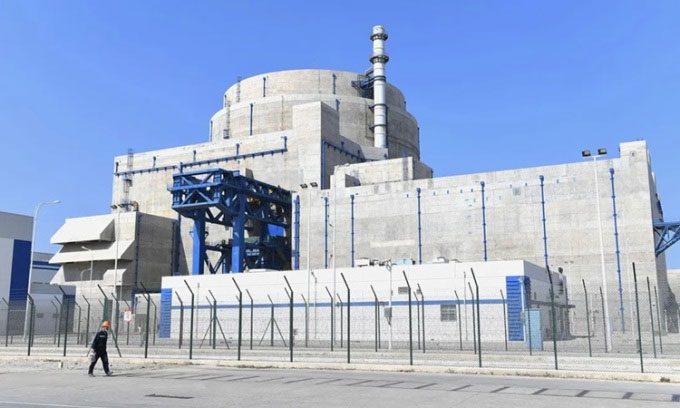China has built 37 nuclear reactors in just 10 years and may achieve a new construction pace of 8 to 10 reactors each year.
To reduce dependence on imported fossil fuels and phase out high-emission coal-fired power plants, the Chinese government is turning to one of the most sustainable forms of non-renewable energy. Over the past decade, China has added 37 nuclear reactors, bringing the total to 55, according to the International Atomic Energy Agency (IAEA). In comparison, the United States, the world leader with 93 reactors, has only added two during the same period, as reported by The Economist.

China’s Hualong 1 reactor. (Photo: Xinhua)
Faced with increasing energy demand, China is not slowing its pace. The country aims to install 6 to 8 nuclear reactors annually. Some officials believe this target is relatively low. China’s nuclear authority has stated that the country is capable of constructing 8 to 10 reactors each year. The State Council of China approved a plan to build 10 reactors in 2022. In total, China has 22 nuclear reactors under construction, more than any other country.
The development of nuclear energy has stagnated in Western countries for various reasons. Nuclear reactors require significant upfront investment and take many years to build. The industry is subject to strict governmental regulations. However, China has paved the way for nuclear energy by providing state-owned utilities with low-interest loans, as well as land and permits. Nuclear power suppliers receive subsidies known as supportive electricity tariffs. These factors have helped reduce the cost of nuclear power in China to about $70 per megawatt-hour, compared to $105 in the United States and $160 in the European Union, according to the IAEA.
China is not immune to safety concerns that have caused many Western countries to hesitate about nuclear energy. Following the disaster at Japan’s Fukushima Dai-ichi nuclear power plant in 2011, China temporarily suspended its construction program. Authorities also maintain a ban on building nuclear plants inland, utilizing river water for cooling.
If China wants to stop using coal and achieve carbon neutrality by 2060, it will need a reliable energy source to meet its baseload power demand (the minimum amount of electricity necessary for all operations). Wind and solar energy are less suited for this purpose due to their dependence on natural conditions. In terms of electricity generation, China’s nuclear power plants far exceed the current installed capacity of solar power. Most reactors are located along the coast, near large population centers, unlike many wind and solar projects which face challenges related to long-distance electricity transmission.
In the early days of its program, China imported nuclear technology. It still relies on other countries for uranium, the fuel used in reactors. However, most of the new or soon-to-be-constructed reactors are based on Chinese designs, particularly the Hualong 1 reactor. With a significant portion of the equipment sourced domestically, China’s nuclear power program is not heavily hindered by export restrictions.
Some Chinese scientists and engineers are working on new projects aimed at developing fusion energy. Fusion power plants do not require uranium and produce far less nuclear waste compared to fission plants. A fusion reactor controls plasma with superconducting magnets in a process known as magnetic confinement. A Chinese reactor recently set a record for the longest plasma confinement time at high temperatures, achieving 17 minutes.




















































